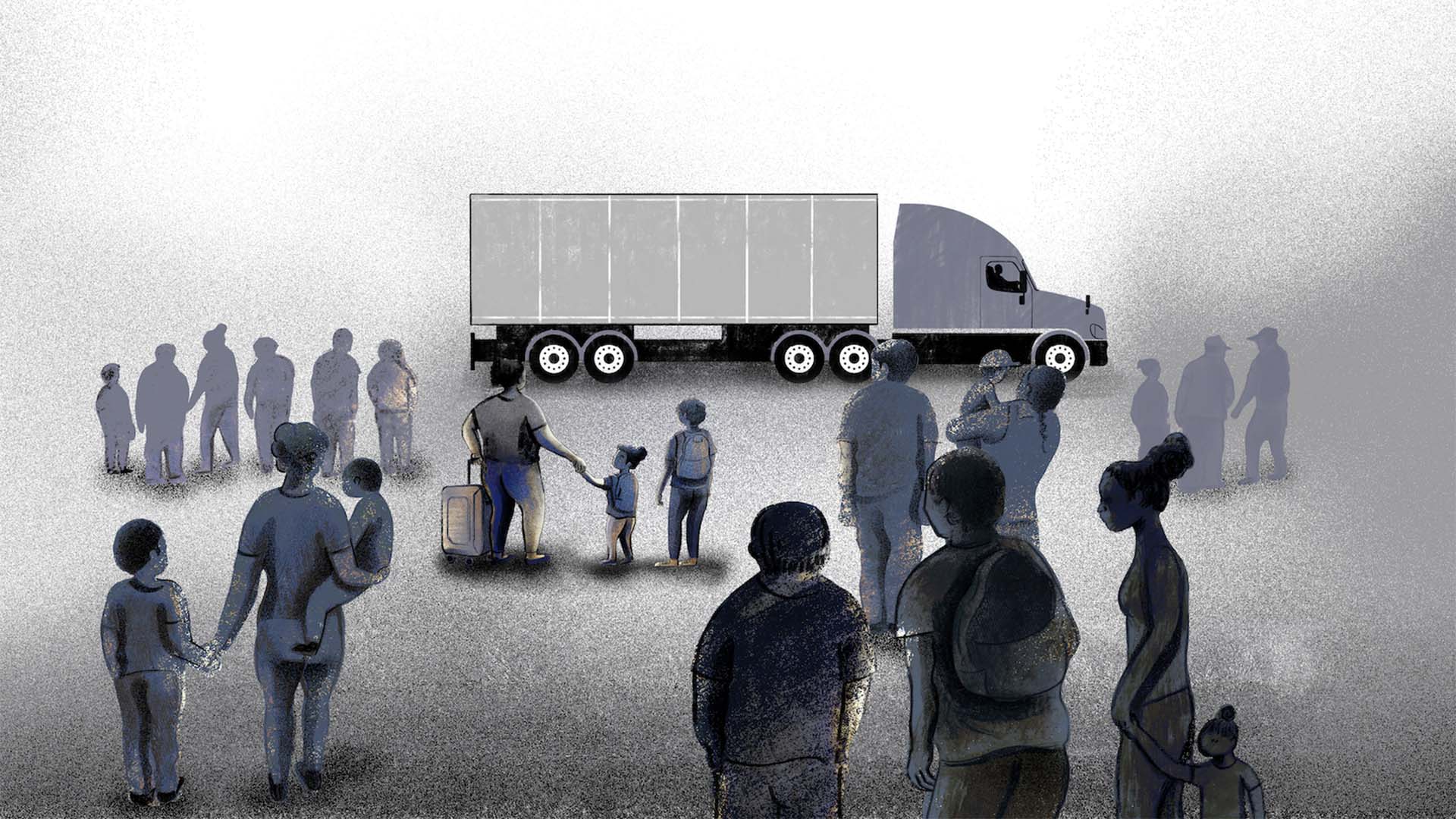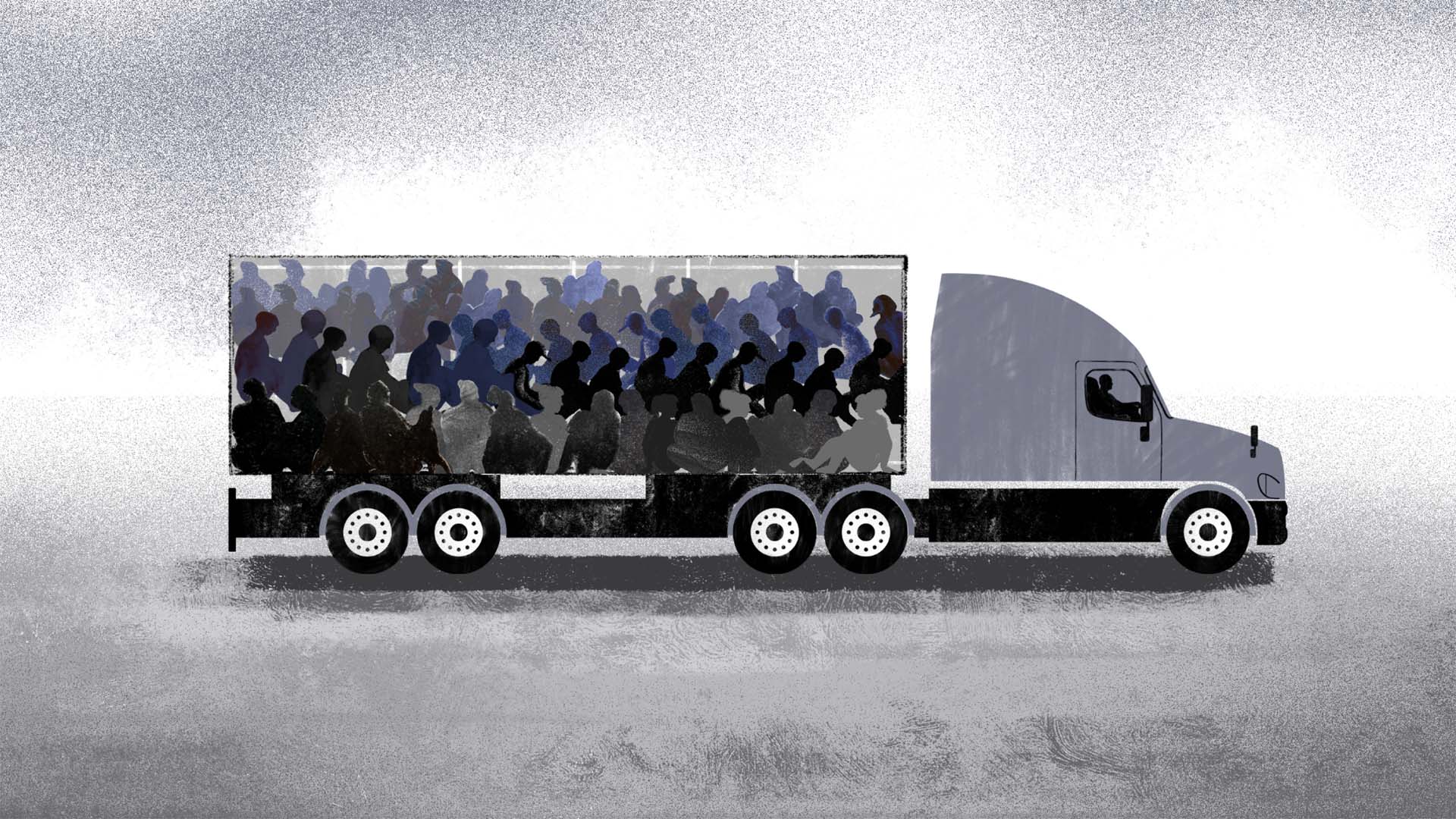A new collaboration from the International Consortium of Investigative Journalists and media partners in Latin America, Europe and the United States documented nearly 19,000 migrants’ journeys to the U.S. border under dangerous conditions.
The investigation “Cargo trucks: a trap for migrants,” led by Noticias Telemundo and the Latin American Center for Investigative Journalism (CLIP) found that the illegal use of cargo trucks to smuggle people across Mexico is on the rise, as are accidents and deaths involving migrants and trucks. This is happening as the Mexican government, pressured by the United States, toughens its policies to limit the record number of people crossing its territory in recent years, pushing migrants to find dangerous and often deadly ways to travel.
The reporters interviewed people who have traveled crammed in cargo trucks to cross Mexico and relatives of those who died in accidents. Reporters also interviewed dozens of experts, migrant’ rights advocates and current and former Mexican officials, including the country’s former immigration chief. The team combed through thousands of pages of public records and a report from Mexico’s National Human Rights Commision, an independent body that looked into one particularly deadly accident that killed 56 people in a Chiapas highway in December 2021.
Noticias Telemundo also produced a 40-minute documentary about the investigation.
Here are some of the stories reported by our partners for this investigation:
The Chiapas accident
Reporters in Mexico, Guatemala and the Dominican Republic interviewed survivors and relatives of victims of the December 2021 accident, including the grandmother of a deceased Dominican man whose father was also killed while attempting to reach the U.S. 20 years earlier. The story also revealed the two main migrant smuggling routes through Chiapas, Mexico’s southernmost state, both of which are allegedly controlled by the Chamula Cartel, whose members know the paths from their own experiences migrating to the U.S. over recent decades.
The Chiapas story also revealed that a multilateral action group created to probe and prosecute the people behind the deadly December 2021 incident only met twice. Reporters couldn’t find evidence of the group’s work or anyone held accountable for the accident in any country.
Read the story in Spanish at Chiapas Paralelo. Read it in English at CLIP.
A trailer truck driver’s testimony
A reporter from Mexican outlet En un 2×3 Tamaulipas spent more than six weeks approaching companies and individuals who work in the trucking industry in the hopes of finding drivers who had carried migrants in trucks. Only one driver agreed to talk but refused to be publicly identified out of fear of retribution. The man, who said he has driven trucks loaded with up to 100 migrants per trip, said that drivers don’t necessarily seek out this kind of work and are instead pressured by the cartels. Refusing the job can mean death, he said. The driver revealed details about logistics, the instructions they are given and how the smuggling networks allegedly work with law enforcement agents to ensure the trucks are allowed through checkpoints.
Read the Spanish Q&A at En un 2×3 Tamaulipas. Read it in English at CLIP.
The social media factor
Searching for clues online about how migrants connect with smugglers, so-called coyotes or polleros in Mexico and Central America, CLIP and investigative center Bellingcat reviewed dozens of posts advertising smuggling services to the United States and Canada. The advertisements were similar to those posted by travel agencies; many even post the rates they charge. In August 2023, a paid Facebook ad in Guatemala that was later taken down read: “Friend, are you thinking of going to the United States? Or are you looking for someone to help you with the crossing? Contact us here. Completely serious, reliable and safe.” The reporters found that many smugglers encouraged potential immigrants to contact them via WhatsApp, one of the most popular messaging applications in Latin America, to make the arrangements privately.
Posts on social media site TikTok asked others to share their experiences of migrating through Mexico in cargo trucks. Approximately 1,600 people replied with their stories, claiming to have traveled between eight and 30 hours in deplorable conditions along with hundreds of people, including babies. Many said smugglers initially didn’t tell them they would travel crammed in cargo trucks.
Read the story here.
Central American migration
Reporters in Honduras and Guatemala interviewed people who have traveled in trailers, only to be sent back to their countries from Mexico or the U.S., including a Guatemalan man who survived the December 2021 Chiapas accident. In the last five years, the U.S. Border Patrol has detained 888,511 Guatemalans and 858,114 Hondurans who crossed the Southern border. The countries rank second and third respectively for most migrants detained by U.S. immigration authorities, with Mexico at number one.
In Guatemala, Plaza Pública revisited the December 2021 Chiapas accident in which Guatemalans made up 42 of the 56 migrants who died. Officials promised to investigate the events, but the reporters found that so far no progress has been reported in the case in Guatemala, while the survivors and their families continue to live in the impoverished conditions they had originally sought to escape.
In Honduras, where between 500 and 700 people reportedly leave the country every day, Contracorriente explored the root causes of the mass migration. According to Contracorriente’s reporting, reasons include a lack of jobs, lack of public safety, political instability, and major natural disasters such as Hurricane Mitch in 1998 and storms Eta and Iota in 2020. “The country has not been able to meet the basic needs of its population,” the reporters concluded.
Read the story from Guatemala in English here and the story from Honduras here.
This article is part of “Cargo trucks: a trap for migrants,” a reporting collaboration led by Noticias Telemundo and the Latin American Center for Investigative Journalism (CLIP), with the International Consortium of Investigative Journalists and Bellingcat.
Pie de Página, Chiapas Paralelo and En un 2x3 Tamaulipas reported in Mexico, Plaza Pública in Guatemala and Contracorriente in Honduras.



